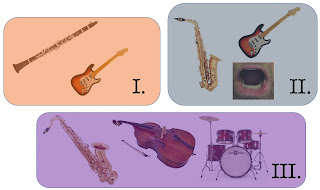courtesy of PIAS
It turns out that next month will mark more than the beginning of a new concert season. According to my records, next Friday, September 7, will be a particularly heavy date for the release of new recordings. (Experience has taught that almost all releases take place on a Friday.) Two of them caught my attention with enough enthusiasm that I felt that they both deserve heads-up notices. Consistent with the breadth of my tastes, one is firmly situated in the eighteenth century, while the other resides entirely in the twentieth.
The eighteenth-century selection is an album consisting entirely of compositions by Antonio Vivaldi involving a genre not usually associated with that popular composer. In 1740 Leclerc and Boivin published a collection of six (a familiar number for collections) sonatas for cello and continuo, which had been written by Vivaldi between 1720 and 1730. These are sometimes incorrectly identified as the Opus 14 collection; but that number is just as fictitious as the assignment of Opus 13 to the Opus 13 collection of sonatas entitled Il pastor fido (the faithful shepherd), none of which were composed by Vivaldi! The sonatas in the 1740 publication do not follow the ordering of Peter Ryom’s catalog (Ryom-Verseichnis, or RV). Here is the 1740 ordering with corresponding RV numbers:
- B-flat major, RV 47
- F major, RV 41
- A minor, RV 43
- B-flat major, RV 45
- E minor, RV 40
- B-flat major, RV 46
These days this collection does not get very much attention. Indeed, where my own listening is concerned, I have encountered only one of these pieces, RV 40; and that was as a concerto, rather than as a sonata. Vincent d’Indy and Paul Bazelaire reworked the sonata as a concerto (presumably with greater audience appeal in mind), which held pride of place in the repertoire of cellist Pierre Fournier. (Don’t get me started on the many efforts of musicians during the nineteenth and early twentieth centuries to make eighteenth-century music more “palatable” to their contemporary audiences!)
The fact is that there is no need to “disguise” any of these sonatas as concertos. They all follow the four-movement sonata de chiesa structure (slow-fast-slow-fast); and each has its own way of taking a more intimate approach to rhetoric than one encounters when a soloist is playing off the “support” of an ensemble. Fortunately, next Friday PIAS will release a new harmonia mundi recording by cellist Jean-Guihen Queyras through which listeners may appreciate the full scope of Vivaldi’s capacity for such intimacy. (As usual, this recording is currently available for pre-order from Amazon.com.)
Queyras performs with three continuo players, cellist Christoph Dangel, Lee Santana on theorbo, and keyboardist Michael Behringer. One of the more interesting features of the recording comes from efforts to establish different rhetorical stances based on key selection. Thus, all three of the B-flat major sonatas find Behringer playing on a small organ, while he uses the harpsichord for the other three sonatas in the collection. Those choices appear to reflect both how Vivaldi sought out different ways for the cello to be expressive in different keys and how the continuo then provides the “background” for those different approaches to expressiveness.
The result is an album that definitely stakes out territory beyond the usual expectations that one brings to listening to Vivaldi; and, at the same time, it reminds us that, as a recording artist, Queyras has established himself as committed to exploring an extensive diversity of approaches to performance in an equally extensive variety of social settings.














